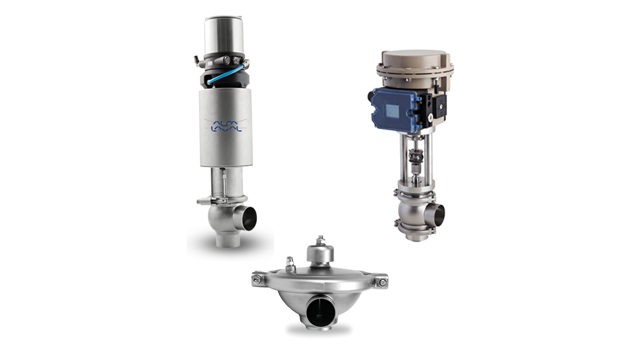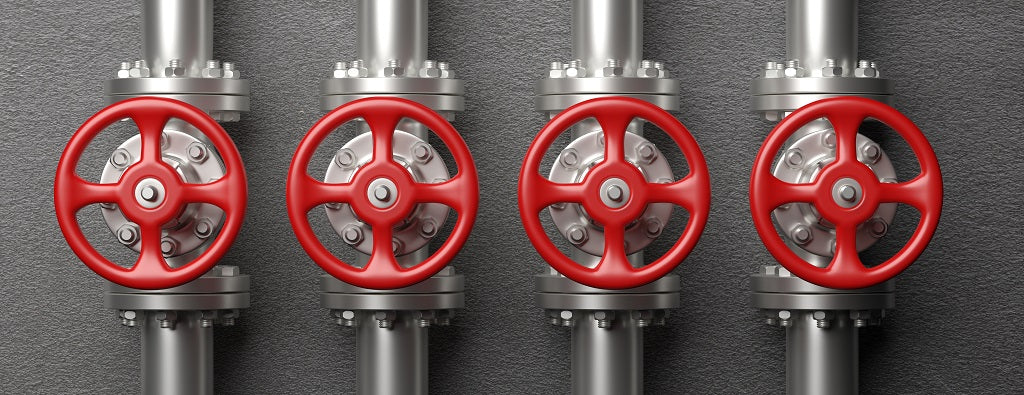Enhancing Functional Performance with Advanced Control Valves
Enhancing Functional Performance with Advanced Control Valves
Blog Article

Maximize Power Savings and Convenience With Advanced Structure Automation Controls
In the realm of modern-day architecture and facility monitoring, the combination of sophisticated building automation controls stands as a crucial development. The convergence of modern technology and sustainability has actually birthed a brand-new era where power performance, convenience optimization, and functional streamlining are no much longer remote aspirations but possible facts. By taking advantage of the power of automation, buildings can adjust, react, and progress in ways that were once inconceivable. The potential for substantial power cost savings and enhanced comfort is not simply a possibility but a promise waiting to be met. This paradigm change in building management holds the crucial to unlocking a globe where environmental conscientiousness and passenger well-being sympathetically exist together within the walls of our structures.
Power Efficiency Advantages
Energy effectiveness benefits can substantially lower energy consumption and operational expenses in buildings. By carrying out energy-efficient techniques and technologies, building owners and operators can accomplish significant savings while likewise adding to ecological sustainability. One of the main advantages of boosting power effectiveness in buildings is the reduction of energy bills. Energy-efficient systems, such as innovative building automation controls, can maximize using sources like air conditioning, heating, and lighting, causing reduced power expenditures with time.
Furthermore, boosted energy efficiency can lengthen the life expectancy of structure devices and systems. By operating more successfully, cooling and heating systems, lighting fixture, and other structure elements experience much less deterioration, resulting in reduced upkeep and replacement costs. Furthermore, energy-efficient buildings often regulate higher home worths and rental rates, giving long-lasting economic benefits to owners.
Moreover, energy performance can improve owner comfort and performance. Properly controlled indoor atmospheres with optimal lights and thermal conditions develop a more helpful and enjoyable workspace, causing improved staff member complete satisfaction and efficiency. In general, the energy efficiency benefits connected with advanced building automation controls are diverse, incorporating price savings, environmental stewardship, and passenger health.
Enhanced Comfort Control
Enhancing convenience control in building environments calls for an advanced integration of innovative automation systems for ideal resident well-being. By utilizing sophisticated structure automation controls, facilities can tailor the indoor environment to meet the particular requirements and choices of occupants. control valves.
By integrating these sophisticated controls, structures can not just improve convenience but likewise enhance energy effectiveness by maximizing system operations based on actual tenancy and usage patterns. Inevitably, prioritizing resident convenience via innovative automation systems leads to a more satisfying and much healthier indoor environment.
Operational Effectiveness Improvements

Furthermore, the execution of real-time monitoring and analytics tools makes it possible for building operators to recognize energy ineffectiveness and functional anomalies quickly. By continually keeping track of energy use patterns and system performance metrics, modifications can be made in real-time to enhance power intake and guarantee peak functional efficiency. control valves. Additionally, integrating need response techniques right into building automation controls can even more boost operational effectiveness by dynamically readjusting power use based on grid conditions and rates signals
Indoor Climate Optimization
Effective interior climate optimization is a basic aspect of building automation controls, making sure owners' convenience and well-being while making best use of energy savings. By utilizing advanced sensors and controls, building automation systems can continuously keep track of and adjust temperature, moisture degrees, air top quality, and air flow to develop an ideal indoor atmosphere. Preserving comfy and regular problems not only improves resident fulfillment however also boosts productivity and total wellness.
Indoor climate optimization additionally plays a crucial duty in power efficiency. By fine-tuning air conditioning, air flow, and heating systems based on real-time information and tenancy patterns, building automation controls can significantly lower power usage - control valves. For instance, executing techniques such as demand-controlled ventilation and thermal zoning can help minimize power waste while making certain that each location of the building obtains the needed conditioning.

Sustainable Setting Production
Building automation controls not only maximize click this interior climate conditions for power performance and passenger comfort but also lay the structure for producing a sustainable atmosphere through strategic monitoring of systems and resources. By integrating innovative structure automation innovations, such as sensors, actuators, and smart software program, facilities can keep an eye on and adjust energy usage in real-time to minimize waste and lower their carbon footprint. These systems enable anticipating upkeep, determining possible problems before they rise and enhancing equipment efficiency to enhance long directory life and effectiveness.
Moreover, lasting environment creation prolongs past energy management to incorporate water conservation, waste decrease, and indoor air quality enhancement. Structure automation controls can control water use, identify leaks, and make certain appropriate garbage disposal practices, adding to overall sustainability initiatives. Furthermore, by regulating and keeping track of air flow and filtration systems, these innovations boost occupant health and wellness and performance while decreasing power intake related to a/c procedures.
Conclusion
In final thought, advanced building automation manages deal significant benefits in terms of energy Go Here financial savings, convenience control, operational efficiency, indoor environment optimization, and developing a lasting atmosphere. By applying these controls, structures can achieve optimal performance while minimizing power intake and boosting occupant comfort. It is apparent that the use of sophisticated automation modern technology is crucial in enhancing building performance and producing a much more lasting future.
Power performance advantages can dramatically reduce energy usage and operational expenses in buildings. In general, the energy effectiveness advantages linked with innovative structure automation controls are complex, incorporating price financial savings, ecological stewardship, and occupant health.
Additionally, incorporating need feedback strategies into structure automation controls can better boost functional effectiveness by dynamically adjusting energy use based on grid problems and prices signals.
Building automation controls not only optimize indoor environment problems for energy efficiency and occupant convenience yet additionally lay the foundation for developing a lasting setting with critical management of sources and systems.In verdict, advanced structure automation controls deal significant advantages in terms of energy cost savings, comfort control, operational performance, indoor environment optimization, and creating a lasting environment.
Report this page